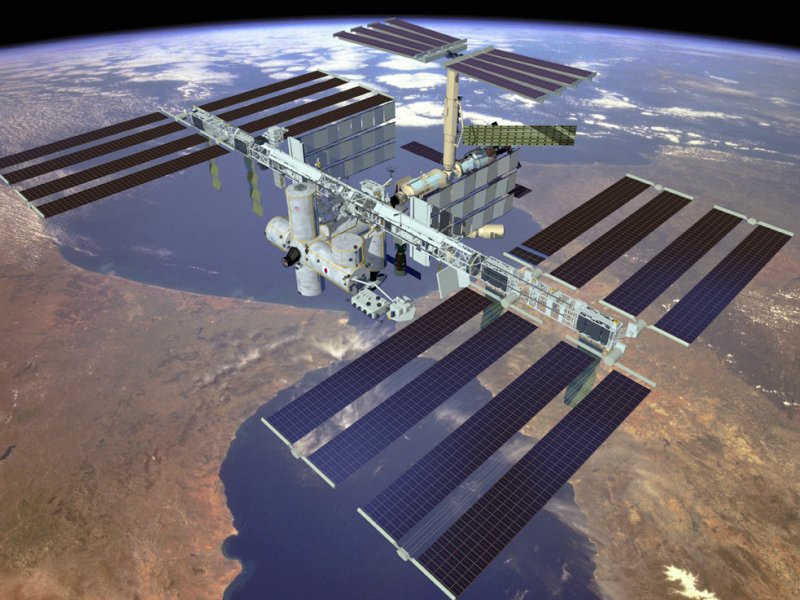![]()
Space Stations
Cooperative Workspace
![]()
Living in Space...
The Soviets successfully launched the first space station, Salyut 1 (left), into orbit on April 19 of 1971. Sadly, the Soyuz 11 crew who spent 21 days christening the station as operational died during re-entry when their ship depressurized. This station was to be the first of a number of small space stations developed and successfully deployed into orbit. The first space station to gain some girth and endure a greater longevity of usefulness would be the Mir space station. The first piece of Mir was launched into space on February 20 of 1986. The station would take a take a total of ten years to complete with the ninth and final piece reaching the station in 1996. The Americans played their part in the construction by aiding in the delivery of two of the pieces. The first piece delivered in 1995 was known as Spektr. It was a Russian module originally designed to carry out military experiments and was now redesigned to employ scientific experiments. Also in 1995, the shuttle would carry a docking compartment to the station that allowed easier docking of the shuttle without the need to reconfigure the station. Before the Soviets stopped funding for Mir in 1999, which was largely due to the damage that occurred from a docking accident with an unmanned craft, Valery Polyakor would sp
end 1 1/2 years in space. Accomplishing this feat in 1994, this is now the longest duration spent in space by a human being. Another contributing factor to the decommissioning of the Mir is the construction of the International Space Station. The first piece was launched into space on November 20 of 1998. This station is in the tradition of the Mir, being manned continuously by a three-man crew performing a variety of scientific experiments, but boasts the joint cooperation of many countries in space. At right, the space shuttle Atlantis docks with Mir.
source: http://pantransit.reptiles.org
source: http://astro.zeto.czest.pl
The International Space Station.
